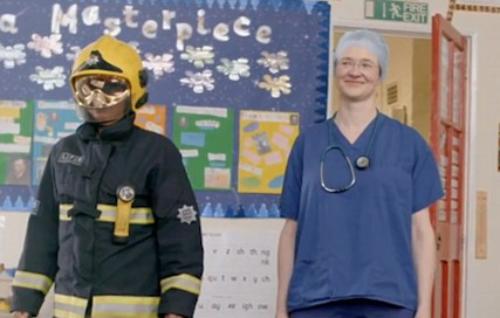Unhappy the land that is in need of surgeons and firefighters. Or not?
What do young surgeons and firefighters have in common? Let’s start from a new research which found that:

- the labor-saving practice of robotic surgery is making it difficult for junior doctors to learn how to perform operations
- senior surgeons often took over from younger medics during training, so they didn’t get enough experience to learn. After completing their residencies, young doctors were not adequately prepared to complete robotic surgeries alone
The conclusion would be that what takes away not just jobs, but above all training for doctors, is ROBOTS. I believe that this is not the real story highlighted by that research. To see what I mean, compare that “Robots stealing training” piece with this other article, which is FOURTEEN years older, and has nothing to do with robots:
"there was a 31% decrease in the incidence of structure fires throughout the United States between 1987–2001. A direct result of this reduction means less firefighting experience for our firefighters. As more-experienced firefighters retire, they are replaced by comparatively less-experienced personnel. This situation mandates optimal training techniques. Visualization and simulation technologies are maturing at a rapid pace and offer great potential to augment current training programs."
Both these stories are about people who committed to serve other people, but have less opportunities than their seniors to be really prepared for their service.
But what reduced their opportunities is cost constraints AND higher safety regulations aimed to reduce both fires and surgery mistakes. And what makes that reduction possible is software, not robots. Because all robots contain software, but just some software runs inside robots. Robots are nothing but software inside a box that more or less looks like a human body, or some part of it.
What we actually have here is that software (often indirectly, e.g. CAD software that allows safer building designs, development of new materials etc):
- highly reduces the number of times society needs some fearless and highly skilled human to be around and take charge AND, at the same time,
- increases the odds that there will not be such a human around in one of those fewer times
and that this has been going on for decades now. Whether this is actual progress or not is left as exercise for the reader. “Unhappy the land that is in need of heroes”, said Bertolt Brecht, but I doubt he’d have considered software as a suitable fix to the need of heroes. On the other hand, software also creates new opportunities for both training (e.g. simulators) and risk reduction: surgeons worldwide, for example, are already using 3D-printed models of the body parts they must fix or replace, to operate more safely and effectively.
In practice, of course, the answer entirely depends on how to regulate professional training, control of software and lots of other things. But, as always, the first thing to do is to properly identify the problem.
Image source: partial screenshot from this article
Who writes this, why, and how to help
I am Marco Fioretti, tech writer and aspiring polymath doing human-digital research and popularization.
I do it because YOUR civil rights and the quality of YOUR life depend every year more on how software is used AROUND you.
To this end, I have already shared more than a million words on this blog, without any paywall or user tracking, and am sharing the next million through a newsletter, also without any paywall.
The more direct support I get, the more I can continue to inform for free parents, teachers, decision makers, and everybody else who should know more stuff like this. You can support me with paid subscriptions to my newsletter, donations via PayPal (mfioretti@nexaima.net) or LiberaPay, or in any of the other ways listed here.THANKS for your support!